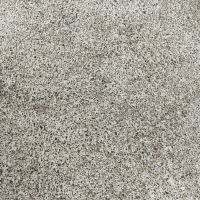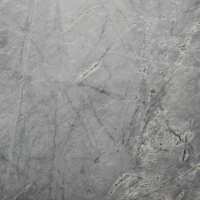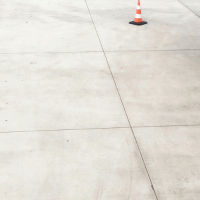Introduction
Several factors must be considered when finishing concrete floors in high-traffic areas to ensure durability, functionality, and aesthetic appeal. These factors include the choice of materials, structural design, finishing techniques, and environmental considerations. Each aspect is crucial in the performance and longevity of concrete floors subjected to high traffic.
Material Selection and Design
Concrete Block Paving is an established choice for high-traffic areas due to its remarkable durability and resilience against significant wear and tear. These concrete paving blocks are engineered to endure the stresses imposed by constant foot traffic, vehicle movement, and other external factors contributing to surface degradation over time. In the planning and design stages, contractors and construction professionals play a crucial role in the selection of materials and the design of the pavement. They must give careful consideration to potential subsidence, which refers to the gradual sinking of the surface and horizontal forces that may act upon the pavement. These forces can result from vehicle turning movements or environmental changes. Comprehensive traffic surveys should be conducted to ensure the design can accommodate these challenges effectively. Additionally, advanced 3D modelling techniques can be employed to simulate various load conditions and interactions, enabling the identification of potential weaknesses in the pavement structure. By addressing these factors, designers can enhance the longevity and effectiveness of concrete block paving in areas subject to heavy use, as highlighted in the work of Majer et al. (2024).
Pervious Pavement Systems present a unique alternative to traditional paving options, especially considering their environmental advantages. These systems are designed to facilitate water infiltration, thus reducing surface runoff and promoting groundwater recharge. However, despite their ecological benefits, previous pavements may not inherently possess the structural integrity required for high-traffic areas without appropriate modifications. It is essential to assess the compressive strength of the concrete mix utilised in these systems, as this characteristic is crucial for ensuring that the pavement can withstand the anticipated loads imposed by vehicles and pedestrians. If the compressive strength is inadequate, the pavement may suffer from premature failure, compromising both its functionality and the environmental benefits it is intended to provide. Adaptations to the concrete mix or additional reinforcement strategies may be necessary to achieve the desired performance levels in high-traffic situations, as noted by Smith (2016). Therefore, a careful balance must be struck between environmental sustainability and structural capacity when implementing previous pavement systems in demanding locations.
Finishing Techniques
Concrete finishing machines play a crucial role in enhancing the quality of surface finishes for various construction projects. By employing these advanced machines, contractors and construction professionals can achieve high precision and control throughout the finishing process. This precision ensures that the final surface not only appears aesthetically pleasing but is also highly functional. The ability to carefully manage texture, smoothness, and evenness contributes to a finished product that can withstand significant wear and tear, particularly in high-traffic areas. Using these machines results in surfaces that are durable and safe for pedestrian use, as they reduce the risks associated with uneven or poorly finished concrete surfaces.
Honed finishing techniques are particularly effective for stone floors located in areas that experience heavy foot traffic. Finishes applied to materials such as granite and gabbronorite are designed to retain their visual appeal while enhancing their resilience against daily wear. The honed finish creates a smooth surface that maintains sufficient texture to ensure traction, thereby reducing the likelihood of slips and falls. This balance between aesthetic quality and durability makes honed finishes ideal for public spaces, commercial settings, and residential areas where foot traffic is consistently high, providing a sense of long-term value and investment for property owners and managers.
Durability and Environmental Considerations
Durability Enhancements: Applying organic and inorganic composite materials, which are materials made from a combination of two or more distinct materials, to concrete floors significantly advances construction and materials science. These composite materials are engineered to improve the bonding strength of concrete, thereby enhancing the overall structural integrity of the flooring. As a result, concrete surfaces become more resilient to wear and tear, which is particularly important in environments that experience high levels of foot traffic or heavy machinery usage.
Furthermore, incorporating these materials also contributes to a notable decrease in noise levels. The ability to absorb sound and vibrations makes these enhanced concrete floors suitable for settings where noise reduction is a priority, such as in commercial spaces, educational institutions, or healthcare facilities. This characteristic is particularly beneficial in urban areas where noise pollution can be a significant issue.
In addition to their acoustic benefits, organic and inorganic composite materials help mitigate environmental concerns associated with concrete floors. By reducing harmful pollutants’ emissions and improving the sustainability of flooring solutions, these materials align with increasing demands for eco-friendly construction practices. Therefore, using composite materials in concrete flooring enhances durability and addresses critical factors such as acoustic performance and environmental impact, making them an ideal choice for use in high-traffic environments where performance and sustainability are paramount (Hwan et al., 2017).
Conclusion
In the design and selection of flooring, there exists a crucial emphasis on durability and functionality, ensuring that the surface can withstand heavy usage while meeting the practical demands of its environment. However, it is equally important to recognize that aesthetic considerations are vital and should not be ignored. The visual appeal of a floor significantly influences the overall atmosphere and impression of commercial and public spaces. Therefore, selecting materials, colours, and finishing techniques becomes essential, as these choices not only enhance the floor’s beauty but also contribute to the cohesive design theme of the environment, instilling a sense of visual harmony and elegance in the space.
The variety of materials available today—from natural wood and stone to advanced composites—offers numerous possibilities for creating visually striking floors. Each material has its unique texture and colour palette, enabling designers to craft spaces that resonate with their intended purpose, whether a sophisticated office setting or a vibrant retail environment. Finishing techniques such as polishing, staining, or applying protective coatings involve applying a layer of protective material over the concrete surface to enhance its durability and aesthetic appeal, further accentuating these materials and influencing how light interacts with the surface and how the colours are perceived. This interplay of material and finish can elevate the aesthetic value of the flooring, making it a defining feature of the space.
Environmental considerations also play a significant role in the flooring decision-making process. Practical aspects such as water drainage and pollution can affect both the longevity of the flooring and the health of the environment in which it is installed. For example, flooring solutions incorporating effective drainage systems can prevent water accumulation, reduce damage risk, and promote safety. Moreover, selecting eco-friendly materials and finishes can minimise the ecological footprint of the flooring choice, aligning with contemporary sustainability goals. By prioritising both aesthetic qualities and environmental responsibility, it is possible to create flooring solutions that are not only visually appealing but also contribute to a healthier planet.






